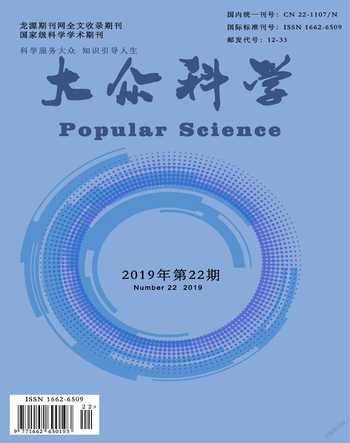Application of Prototype Theory in Translation Studies
Abstract:This paper studies the application of prototype theory (PT) in the Chinese-English(CE) translation. With the advancement of globalization and economy, international connections and corporations among countries become commonplace. Taken into accounts of this, this paper deals with the application of prototype theory in CE texts with an attempt to further construe this theory and its application.
Key words:prototype theory; CE translation; international corporation
I.Introduction
English has become an important language worldwide with many countries and organizations making it an official language. In light of this, the study of translation has become essential. Many theories are used to enhance translation quality and to better study translation skills. PT is one of those theories usually used in translation studies.
II.Theoretical Framework
The term prototype has been firstly defined in Rosch's study as a stimulus. Later she defined it as the most central member of a category. Taylor argued prototype can be understood as a schematic representation of the conceptual core of a category.
PT tracks its origin back to the 1950s through the work of Wittgenstein. Through research on category GAME, he proposed Family Resemblance theory. Berlin& Kay studied colors and advanced a theory of cross-cultural color concepts. Rosch also studied color category in her early studies, and later she extended her experiment from the color category to other areas. Labov made an experiment about respondents' concept of vases, cups, bowls and mugs, and found it difficult to draw a line between them in accordance with dichotomy. Based on Wittgenstein's "family resemblance" principle, Rosch and her colleagues proposed "Prototype" concept and created prototype theory.
From their studies, the features of prototype category are as follows: a) the prototypicality of category members; b) the centrality of category structure; c) the ambiguity of category boundaries; d) the openness of category boundaries. According to the interpretation of PT, we found translation presents the characteristics of PT. Firstly, the scope of translation category has blurred boundaries. Secondly, internal members of translation category have different status, just like that in the prototype theory.
III.Application of Prototype Theory in Translation Studies
Prototype theory can be used in many areas of research such as the study of vocabulary teaching and grammar. This paper focuses on its application in translation studies.
(I)Graded status of translation categories
There are 3 levels of categorization: superordinate, basic, and subordinate level categories. Different levels of categorization make different semantic effect. In translation studies, the selection of words or expressions is important for translation quality evaluation.
Ex.1:
ST: 三月暮, 花落更情浓。(吴文英《望江南·三月暮》)
TT: Late in spring. The fallen blooms. Add to my growing gloom. (许渊冲译)
In example 1, the word “三月” is translated into “spring”, the superordinate level category of March. In Chinese lunar calendar, spring spreads from lunar January to lunar march, and March can be seen as the period late in spring. For audiences unfamiliar with this, spring begins in March and ends in May.
(II)Family resemblance among translation categories
The most important characteristics of PT is that different members share a family resemblance. Therefore, PT can be used to analyze the translation of words with different part of speech but attribute to the same category.
Ex. 2:
ST: He failed to shine academically but he is good at sport.
TT: 他學业不怎么样,但体育好极了。
In example 2, the word "shine" originally has a meaning of "brightness". According to the prominence principle, the central meaning "brightness" of this word has a characteristic of shining in all directions, becoming the focus of the action. The verbal and nominal meaning of this word enjoy a family resemblance, thus it is easy to figure out the meaning of the word "shine" in this sentence.
(III)Cultural differences among translation categories
Culture is one of the factors that affect prototype. Due to differences in cultural background, translators from different countries may share a distinct prototype category. Therefore, cultural differences are to be taken into accounts while translating.
Ex. 3:
ST: 宝玉看罢,因笑道:“这个妹妹我曾见过的。”
TT: Having completed his survey, Bao-yu gave a laugh. " I have seen this cousin before." (David Hawkes's version)
In example 3, the Chinese word “妹妹” means one's younger sister, while the English word "cousin" can be one's younger or elder sister/brother. In this kind of texts, the translator shall analyze the semantic category of "妹妹", and then find a proper expression in the target language. The scope of the same objects or phenomena in different languages are always somehow distinct, and thus the transfer of one category into another is essential while translating.
IV.Conclusion
Translation is a gradual, tedious process. The selection of a lexical word or expression relates to one's recognition about an object. The application of PT in translation studies is essential for the accurate transmission of the original text meaning to target audiences.
Reference
[1]Berlin, B., Kay, P., 1969. Basic Color Terms: Their Universality and Evolution. University of California Press, Berkeley
[2]Labov, W. 1973. The boundaries of words and their meanings. In Charles-James Bailey and Roger W. Shuy (eds.), New Ways of Analyzing Variation in English. Washington, DC: Georgetown University Press, 340-371.
[3]Taylor, J. 1989. Linguistic Categorization—Prototypes in Linguistic Theory. OUP.
[4]Rosch, E. &Mervis C.B. 1975. Family Resemblances: Studies in the Internal Structure of Categories. Cognitive Philosophy.
[5]王寅,《认知语言学》。上海:上海外语教育出版社,2007。
作者简介:张荣红(1995.05),女,四川资阳,西南财经大学,硕士研究生,商务英语研究

